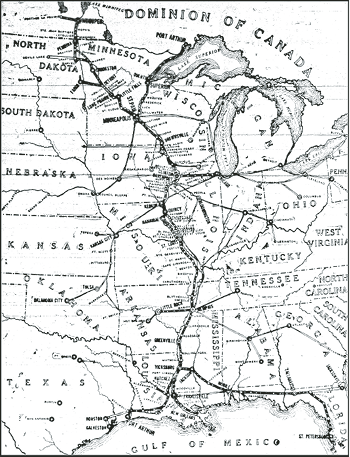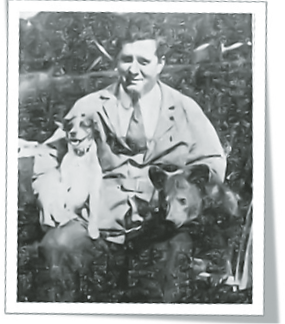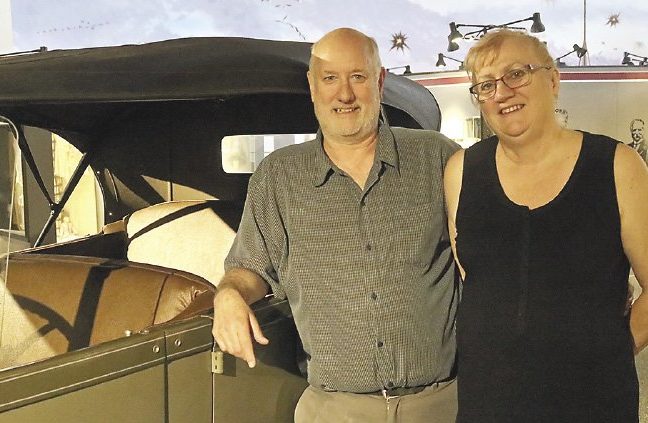According to Thunder Bay historian Beverly Soloway, who teaches history at Lakehead University, “As the popularity of the auto increased, so did the demand for auto-driveable roads. In the Thunder Bay region, the first roadway out of the district was the Scott Highway—the section from Lakehead [today’s Thunder Bay] to Grand Marais—which was also called the Lake Superior International Highway and by 1926, was referred to as Highway 61.”
In Canada, it was local initiatives that build the roads, not the government. And in the U.S., Soloway said the early highways were planned by “independent groups of interested auto-travellers often called pathfinders, auto gypsies, and auto tramps.” By 1919, the Canadian border was the start for five north-south tourist routes, including the International Falls, Minnesota to New Orleans route.
Today’s Thunder Bay became a northern destination to auto gypsies on October 2, 1921, when the “Port Arthur, Ontario to Port Arthur, Texas Scenic Highway” was officially opened (Port Arthur, Ontario is part of today’s Thunder Bay). The 1,800-mile-route (2,896 km) was the brainchild of a wealthy American promoter, marketing professional and automobile enthusiast, New-Jersey-born Truman Pierson from Minneapolis, the creator and general manager of the Mississippi River Scenic Highway Association. The PA-PA highway was one of the three international auto-driveable routes he was developing along the Mississippi River; the other two were Chicago to New Orleans via St. Louis and Winnipeg to Florida via Minneapolis. His goal was to establish a new automobile highway, collecting a membership fee from communities along the way to compensate for expenses.

Pierson and his wife Edna, as well as his team of pathfinders, travelled in their 1918 Maxwell Touring “Scout” car on the back roads along the Mississippi River to find the best tourist road connections. Their “Scout” car was the name of their fox terrier that accompanied the Piersons; later, in the Lakehead they also picked up a baby bear mascot they named Paddy Mariaggi and at times, the couple also brought along kittens gifted to them.
Road trips along gravel roads were more of an adventure than today, given that gas stations were hard to find, and no garages or restaurants lined the routes. But the communities along the proposed route welcomed the pathfinders, treating them like celebrities and hoping to be part of the scenic highway system.
“The Piersons and their fellow pathfinders were feted at the communities they travelled to,” said Soloway. “In exchange for meeting with service clubs like the Rotary, the Kiwanis, and the Chamber of Commerce, along with local politicians, they were invited to banquets and meetings, and were written up in local newspapers. For a man like Truman Pierson who so wanted to be ‘someone,’ this was his true reward.”
At every stop along the route, Soloway said there were letters exchanged to/from the Rotary, Kinsmen and/or mayors.
“I have yet to find actual copies of the letters. I would love if anyone has information on the letters, or any photos or family stories about the journey to contact me
at: beverly.soloway@lakeheadu.ca,” said Soloway.
In the summer of 2018, Soloway and her husband Neil drove Pierson’s proposed Port Arthur to Port Arthur scenic highway route, leaving Canada on Saturday and arriving on Thursday in Port Arthur, Texas. She noted that the route did not follow either I-35 south or Highway 61.

“Surprisingly, it veers into Wisconsin in Duluth, travelling south from Superior before emerging outside of St. Paul. It was truly a beautiful route—following as close to the Mississippi River as possible. People along the way were surprised to hear the story of our ‘pathfinding’ adventure—and were most intrigued by our journey.”
Having now travelled the PA-PA as modern-day pathfinders, Soloway said, “When we take road trips today we’re often more interested in the destination than the journey. The story of the Port Arthur to Port Arthur Scenic Highway is about more than a beautiful route from one city to another. It is also about the connections we make along the way. At a time when the people of Lakehead had no auto routes to travel across Canada, this highway connected us to points across the U.S.A. The route also brought Americans to the Lakehead.”
Soloway explained, “The scenic highway is an early example, too, of goodwill-ambassadorship and boosterism in the Lakehead as we were engaged in ‘selling’ the promise of a prosperous Lakehead to American investors. The arrival of auto-tourists promoted a need for local tourist facilities and auto service and supply centres. Most importantly, the Port Arthur to Port Arthur Scenic Highway demonstrated the value of long-distance highway connections.
“Isn’t it amazing to think that we take roadways for granted, yet 100 years ago having an auto-highway was international news!”
And what happened to the route? Well, it faded into history, though as late as 1965 in the Minneapolis Polk City Directory, 81-year-old Pierson was still listed as “Manager of the Mississippi River Scenic Highway.” (He died two years later.)




